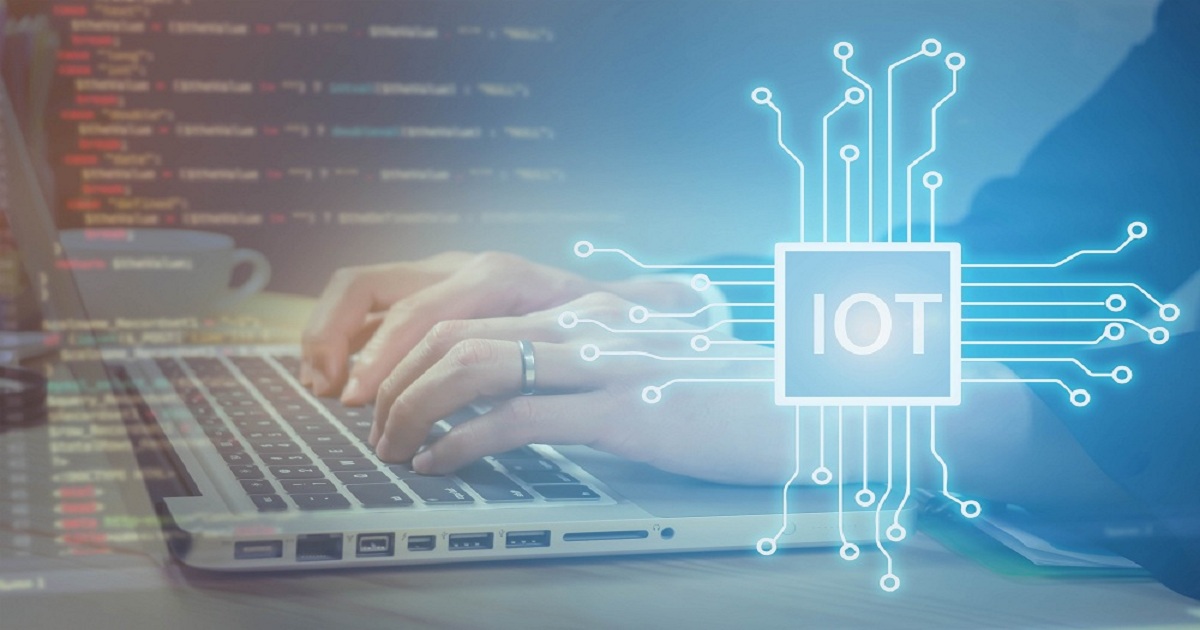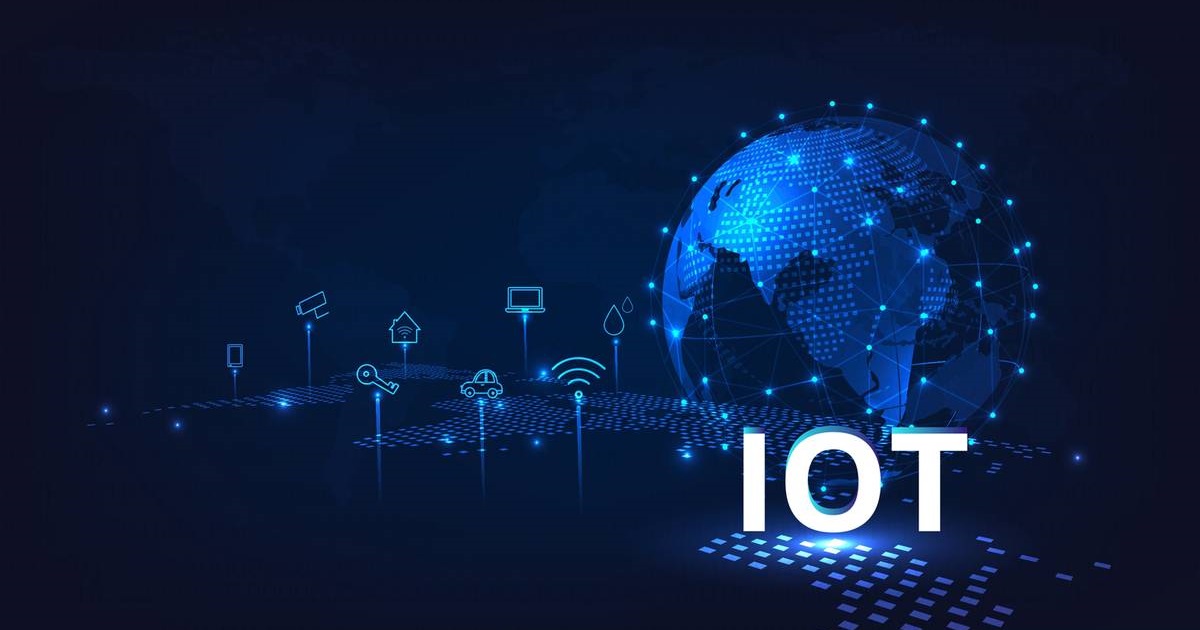
Industrial IoT
Ceva, Inc. | January 05, 2024
Ceva, Inc. (NASDAQ: Ceva), the leading licensor of silicon and software IP that enables Smart Edge devices to connect, sense and infer data more reliably and efficiently, today announced the general release of its next generation RivieraWaves Wi-Fi 7 IP platform, further expanding its widely-licensed portfolio of connectivity IP, targeting high-end consumer and industrial applications including gateways, TVs, set-top-boxes, streaming media devices, AR/VR headsets, personal computing and smartphones. The RivieraWaves Wi-Fi 7 IP leverages all the latest advanced features of the IEEE 802.11be standard to deliver a premium high performance, cost- and power-optimized Wi-Fi solution for integration into the next wave of Wi-Fi Access Point (AP) and Station (STA) products.
According to global technology intelligence firm ABI Research, annual Wi-Fi enabled chipset shipments will exceed 5.1 billion by 2028, with more than 1.7 billion of these chipsets supporting the Wi-Fi 7 standard. As Wi-Fi enabled device shipments continue to grow, increasing numbers of semiconductor companies and OEMs are choosing to integrate Wi-Fi connectivity into their chip designs, and need access to high quality Wi-Fi IP to reduce the development costs and risks. Spanning Wi-Fi 4/5/6 over the past decade, Ceva has already established a considerable leadership position in Wi-Fi IP licensing, with more than 40 licensees for its RivieraWaves Wi-Fi 6 IP family, serving a wide range of end markets and applications, from end points to access points, across the IoT sphere. Expanding on this leadership position, Ceva's RivieraWaves Wi-Fi 7 IP provides a unique, comprehensive 802.11be MAC and PHY solution for integration into the next generation of Wi-Fi SoC products.
Andrew Zignani, Senior Research Director, ABI Research, commented: "Ceva's wireless connectivity IPs play an integral role in the proliferation of connectivity standards in the broad IoT markets, as is evident from their customer's success in shipping more than 1 billion connectivity chips annually. With the introduction of their RivieraWaves Wi-Fi 7 IP platforms, semiconductor companies and OEMs have a trusted partner to develop differentiated, high-performance Wi-Fi 7 chipsets for their connectivity roadmaps, with lower risk and a lower cost of ownership."
Tal Shalev, Vice President and General Manager of the Wireless IoT BU at Ceva, stated: "The relentless expansion of Wi-Fi usage has pushed the Wi-Fi 7 standard to offer enhanced data throughput, improved latency and support more spectrum in the face of mounting network congestion. Achieving this requires highly complex, cutting-edge functionalities like 4K QAM modulation, Multi Link Operation and Multi Resource Unit to optimize link efficiency across the available bands. Our RivieraWaves Wi-Fi 7 IP platform incorporates all the features of this latest-generation, wireless standard, dramatically simplifying development and time-to-market for companies looking to add Wi-Fi 7 connectivity to their products."
Wi-Fi 7's 4K QAM modulation scheme is a substantial increase on the previous 1K QAM of Wi-Fi 6, while Multi Link Operation (MLO) introduces dynamic channel aggregation, seamlessly combining heterogenous channels from the same or different bands to navigate interference and boost throughput. Similarly, Multi Resource Units (MRU) enables the creation of larger channel bandwidths by intelligently stitching together punctured or disjointed Resource Units within the same band. The outcome is not only a remarkable up to 5 times increase in raw speeds but also significantly reduced latency, thanks to diminished contentions and retries.
About Ceva, Inc.
At Ceva, we are passionate about bringing new levels of innovation to the smart edge. Our wireless communications, sensing and Edge AI technologies are at the heart of some of today's most advanced smart edge products. From Bluetooth connectivity, Wi-Fi, UWB and 5G platform IP for ubiquitous, robust communications, to scalable Edge AI NPU IPs, sensor fusion processors and embedded application software that make devices smarter, we have the broadest portfolio of IP to connect, sense and infer data more reliably and efficiently. We deliver differentiated solutions that combine outstanding performance at ultra-low power within a very small silicon footprint. Our goal is simple – to deliver the silicon and software IP to enable a smarter, safer, and more interconnected world. This philosophy is in practice today, with Ceva powering more than 17 billion of the world's most innovative smart edge products from AI-infused smartwatches, IoT devices and wearables to autonomous vehicles and 5G mobile networks.
Our headquarters are in Rockville, Maryland with a global customer base supported by operations worldwide. Our employees are among the leading experts in their areas of specialty, consistently solving the most complex design challenges, enabling our customers to bring innovative smart edge products to market.
Read More

Enterprise Iot
Nozomi Networks | January 25, 2024
Nozomi Networks Inc., the leader in OT and IoT security, today introduced Guardian Air™, the industry's only wireless spectrum sensor purpose-built for OT and IoT environments worldwide. With 80 percent of new IoT deployments wirelessly connected, wireless is quickly becoming a preferred network. The explosion of wirelessly connected devices increases potential access points and exploitation of networks. This puts critical infrastructure at risk of cyberattacks and disruptions to operations.
Guardian Air provides much-needed visibility into wirelessly enabled devices which until now were only detected once connected to the wired network. Guardian Air monitors several prominent wireless frequencies, not just Bluetooth and Wi-Fi, to provide security teams with immediate visibility of connected sensors, devices, laptops and cell phones. With the addition of Guardian Air, customers have a comprehensive network solution all in one integrated platform.
"Nozomi Networks has once again innovated to address an unmet need for wireless-level monitoring in OT and IoT environments," said Danielle VanZandt, an industry manager for commercial and public security research at Frost & Sullivan. "From smart manufacturing to digital medicine, to building automation, to modern oil field production and more, today industrial organizations are relying on billions of wireless devices to speed production and time to market. Guardian Air gives IT security professionals and OT operators the visibility they need to get a firm handle on wireless risk management and response."
With Guardian Air, IT security professionals and OT operators can:
Continuously monitor prominent wireless frequency technologies used in OT and IoT environments including Bluetooth, Wi-Fi, cellular, LoRaWAN, Zigbee, GPS, drone RF protocols, WirelessHART and more,
Immediately detect wirelessly connected assets and gain asset information to quickly address unauthorized installations,
Detect wireless-specific threats, including brute force attacks, spoofing, and bluejacking – with the added ability to determine the location of the devices performing the attacks,
Seamlessly integrate wireless data into a single OT & IoT security platform that unifies asset visibility from the endpoint and across wired and wireless networks.
"Wireless is fundamentally changing the way industrial organizations operate. Unfortunately, it also massively expands the potential attack surface," said Nozomi Networks Co-founder and Chief Product Officer Andrea Carcano. "Guardian Air solves this problem by giving customers the accurate visibility they need at the wireless level to minimize risk while maximizing resiliency. Because Guardian Air integrates easily into the Nozomi Networks Vantage platform, customers can combine network, endpoint and wireless for the greatest visibility, threat detection and AI-powered analysis for real-time security management and remediation across the entire attack surface."
The Nozomi Guardian Air wireless sensor will be available this spring from Nozomi Networks and its extensive global network of channel partners.
About Nozomi Networks
Nozomi Networks accelerates digital transformation by protecting the world's critical infrastructure, industrial and government organizations from cyber threats. Our solution delivers exceptional network and asset visibility, threat detection, and insights for OT and IoT environments. Customers rely on us to minimize risk and complexity while maximizing operational resilience. www.nozominetworks.com
Read More

Platforms
Morse Micro | January 09, 2024
Morse Micro, a leading Wi-Fi HaLow silicon vendor, in partnership with Edgecore Networks, a prominent provider of traditional and open network solutions for enterprises, data centers, and telecommunication service providers, today announced a strategic partnership. Together, they unveiled the new Wi-Fi HaLow router - the Edgecore EAP112. This innovative router, ideal for outdoor environments and a variety of other settings, is designed to meet the rapidly growing demands of IoT applications. Equipped with advanced Wi-Fi HaLow capabilities and supporting the Matter protocol, the Edgecore EAP112 is uniquely positioned to connect thousands of IoT devices through a single device, marking a significant advancement in IoT connectivity solutions.
Edgecore EAP112 integrates Morse Micro's MM6108 Wi-Fi HaLow module, marking a significant advancement for both commercial and consumer access point/router segments. The EAP112 is poised to revolutionize wireless connectivity by providing enhanced coverage and longer range for Wi-Fi-enabled IoT products using Wi-Fi HaLow technology.
"Our collaboration with Edgecore represents a pivotal moment in Morse Micro's journey to redefine wireless connectivity for the IoT with Wi-Fi HaLow technology," said Michael De Nil, co-founder and CEO at Morse. "The integration of our Wi-Fi HaLow module into Edgecore's EAP112 access point/router platform exemplifies our commitment to expanding long-range connectivity options for the growing IoT ecosystem."
Wi-Fi HaLow technology is the first Wi-Fi standard tailored to meet the unique needs of the Internet of Things (IoT), making it a superior alternative to traditional Wi-Fi alternatives in a wide range of IoT applications. Operating in the sub-GHz frequency band, the Wi-Fi HaLow 802.11ah standard was designed from the ground up for the IoT, offering an optimal combination of extended range, power efficiency, long battery life for wireless devices, superior penetration of barriers, large network capacity, advanced security, and Wi-Fi compatibility.
The EAP112 offers robust extensibility and usability for diverse IoT applications, featuring Wi-Fi 6, Wi-Fi HaLow, 4G LTE, BLE, Zigbee, and Thread. Designed for resilience in various environments and applications, especially in challenging terrains or climates, it operates within a temperature range of -30°C to 50°C and is IP65-rated for superior water and dust resistance. The EAP112 also provides flexible mounting options, including wall, ceiling, and pole mount, to accommodate specific site needs.
The Edgecore EAP112 is designed to leverage the complementary strengths of Wi-Fi HaLow and Wi-Fi 6 technologies, providing unparalleled range, coverage, speed and reliability. This Wi-Fi combination is especially critical in today's IoT-driven world, where the ever-increasing demand for consistent and robust wireless communication is driving innovations in access point and router platforms.
Key Features of the Edgecore EAP112 Access Point/Router:
Enhanced Coverage: The EAP112, equipped with Morse Micro's MM6108 module, significantly boosts IoT connectivity, ensuring efficient and effective coverage. This enhancement enables intelligent applications across a variety of settings, including expansive residential areas, commercial spaces, and industrial environments.
Advanced Connectivity: The platform's Wi-Fi 6 technology ensures higher data rates and increased capacity, making it ideal for handling multiple IoT devices and high-bandwidth applications.
Optimized Power Efficiency: The integration of Wi-Fi HaLow ensures that the EAP112 is not only powerful but also power-efficient, making it suitable for deployments in remote locations.
Future-Proof Technology: The EAP112 is designed to meet the evolving demands of both commercial and consumer applications, paving the way for widespread adoption of Wi-Fi HaLow technology in the IoT ecosystem.
Our partnership with Morse Micro aligns seamlessly with our goal to provide innovative products in the Wi-Fi HaLow IoT router market. The launch of the EAP112 represents a pivotal moment in harnessing the extensive potential of IoT connectivity, bringing significant advantages to our clientele in both commercial and consumer segments," declared TengTai Hsu, VP of Edgecore Networks. "The EAP112 embodies our commitment to innovation and excellence, reflecting our dedication to advancing IoT applications with technologies like Wi-Fi HaLow and Matter. We have initiated Proof of Concept (POC) collaborations with selected regional customers. Our long-established partner, BeMap, is gearing up to kick off the sales and marketing of the EAP112 in Japan. Concurrently, Edgecore Wi-Fi is preparing to open pre-orders for the EAP112 to the global market later this year."
About Morse Micro
Morse Micro is a leading Wi-Fi HaLow fabless semiconductor company based in Sydney, with global offices. As the world's premier Wi-Fi HaLow company, we pioneer next-gen IoT wireless connectivity solutions. Morse Micro is now sampling its Wi-Fi Alliance and FCC-certifiable MM6108 production silicon: the fastest, smallest, lowest power and longest-range Wi-Fi HaLow chip available in the market. Learn more at https://www.morsemicro.com/.
About Edgecore Networks
Edgecore Networks is a wholly owned subsidiary of Accton Technology Corporation. Edgecore delivers network solutions through channel partners worldwide that keep information moving and connections strong for SMB, enterprise, data center, and service provider customers. For more information, visit https://wifi.edge-core.com/.
Read More
